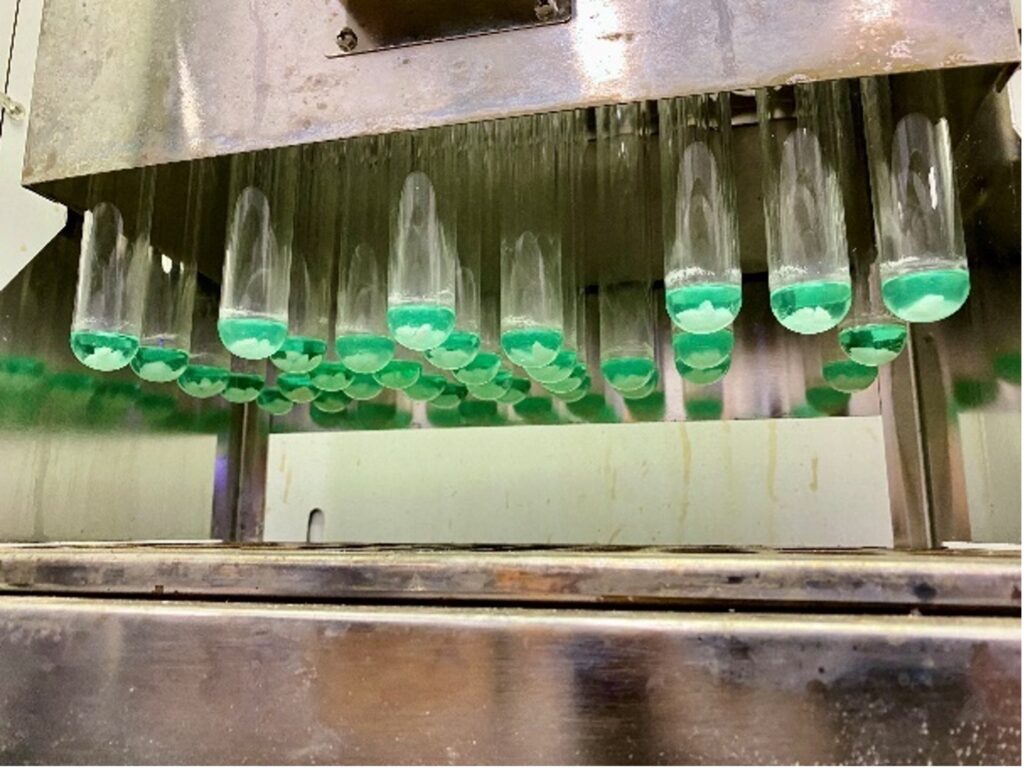Last Updated on January 30, 2024
Did you know that stormwater runoff from city streets, residential neighborhoods, and rural farmland can introduce harmful contaminants and bacteria into the San Antonio River? By analyzing samples collected during rain events, scientists gather insight into what is making its way into our waterways. In the blog, “From drizzle to disposal: the life of a stormwater sample,” we gave a brief overview of what the River Authority water quality scientists do to collect a sample and what happens when it gets to the lab. Now, let’s take a more in-depth look at some of these lab tests and the clues they uncover!
Testing for E. coli
The primary analysis River Authority scientists perform on stormwater samples is Escherichia coli (E. coli) testing. E. coli bacteria typically live in the intestines of people, birds, and mammals. However, when sources of E. coli, like dog waste, are left on sidewalks, streets, or on the ground in a local park, stormwater runoff can transport it into nearby creeks and rivers in amounts that far exceed the safe swimming limit and pose threats to human health. Let’s see how scientists test for E. coli in stormwater samples:
- A nutrient-rich powder pillow containing an E. coli indicator is added to a stormwater sample. After mixing, the sample is sealed in a multi-well container, called a quanti-tray, and incubated for 18 hours.
- Wells containing E. coli bacteria break down the indicator, producing a fluorescent glow under ultraviolet light.
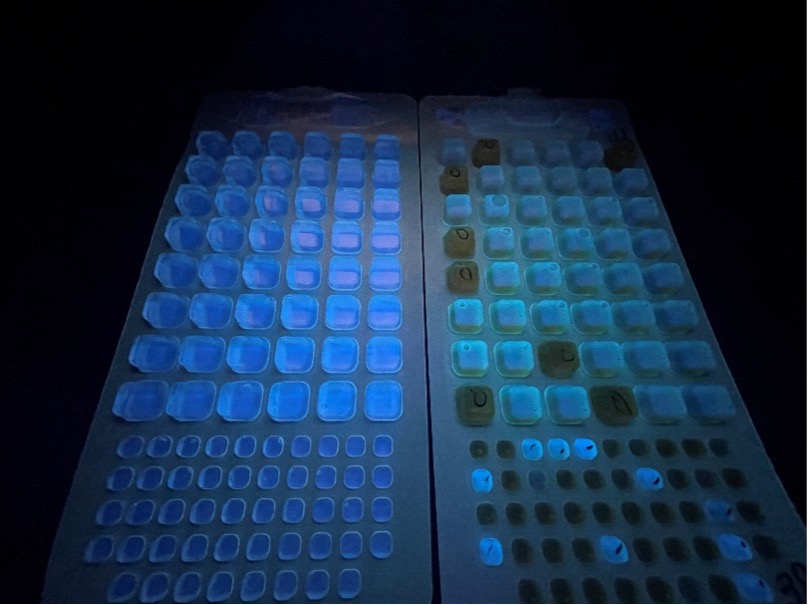
- Based on the number of positive (glowing) wells in the tray, scientists can determine the concentration of E. coli in that stormwater sample. E. coli analysis helps identify sources of potentially harmful bacterial contamination that may put public health at risk.
Testing for Nutrient Levels
Do you have a pet who does their business outside? How about a lawn or a septic tank? Stormwater runoff containing pet waste, fertilizer, and substances from leaking septic tanks is a significant source of nutrients entering streams and lakes. Excess buildup of nutrients in water bodies, also known as eutrophication, leads to algal blooms and oxygen depletion. These conditions can harm fish and other aquatic life that relies on the oxygen dissolved in water to survive. Water quality scientists at the River Authority perform tests on stormwater samples to determine the levels of nutrients, including phosphorous, organic nitrogen, and ammonia. Phosphorus and Total Kjeldahl Nitrogen (TKN) are two essential methods for testing nutrients.

An algal bloom in the San Antonio River.
Phosphorus
- To prepare the stormwater sample for testing certain chemicals are added to the sample, and then it is placed into a special machine called an autoclave. This helps break down the sample’s organic matter, leading to more accurate results.
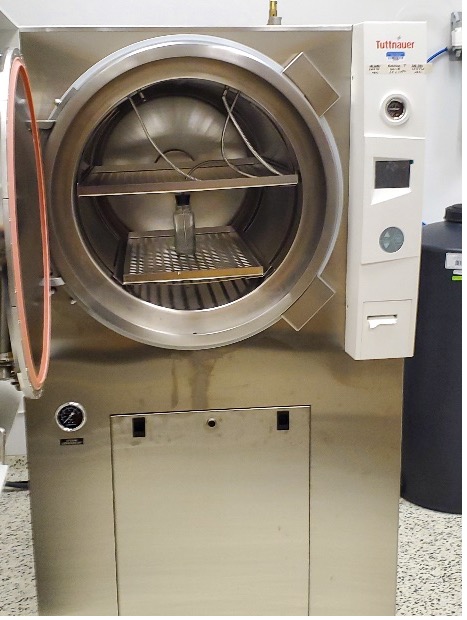
- After autoclaving, samples are put on a hot plate for 20 minutes with an additional chemical to remove any other elements that may affect the accuracy of the results.
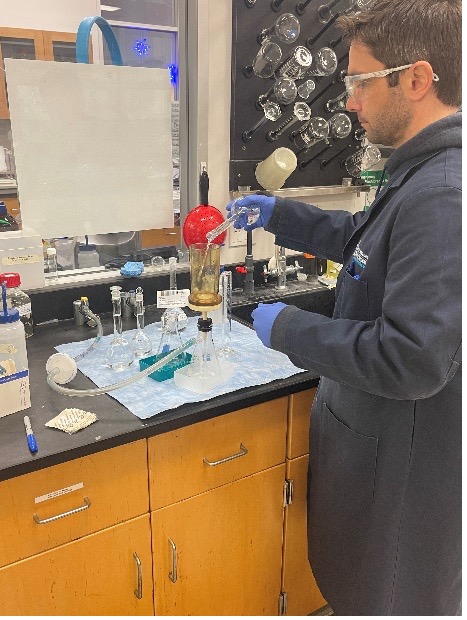
- Finally, the samples are filtered, and more chemicals are added to produce a blueish color change. The blue color indicates the presence of phosphorus; the higher the color intensity, the higher the phosphorus concentration. The color intensity is measured using an instrument called a spectrophotometer — try saying that five times fast! The spectrophotometer shines a light beam through the sample and calculates the concentration based on how much light is absorbed.
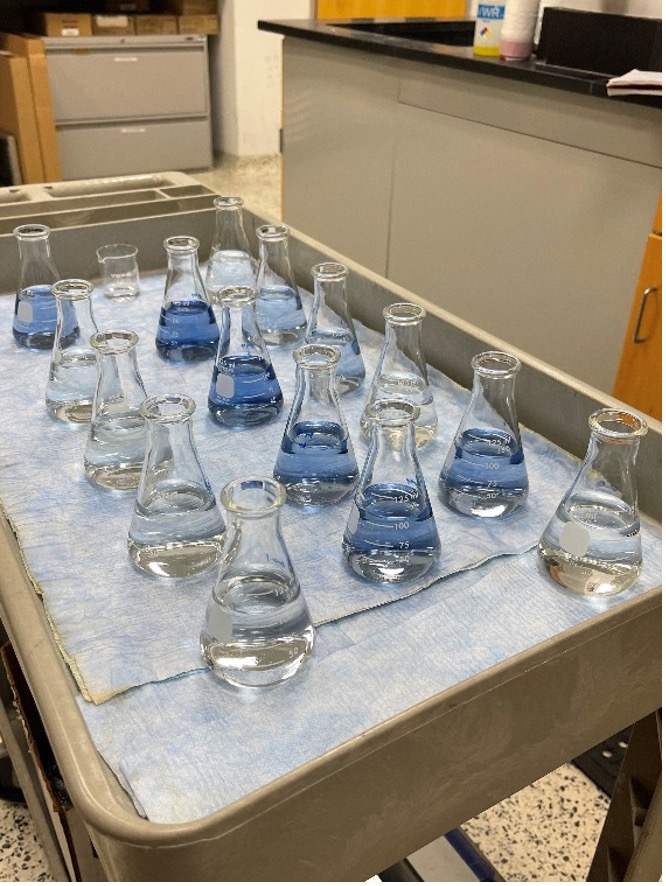
Total Kjeldahl Nitrogen (TKN)
TKN is the sum of organic nitrogen and ammonia in the sample. TKN analysis provides the opportunity to determine the amount of nitrogen contained in organic form.
- In the first step, sulfuric acid and a digestion substance are added to stormwater samples and heated to a high temperature (716°F) using a heat block (and you thought a Texas day in July was hot!). Digestion breaks down all the organic matter and releases nitrogen.
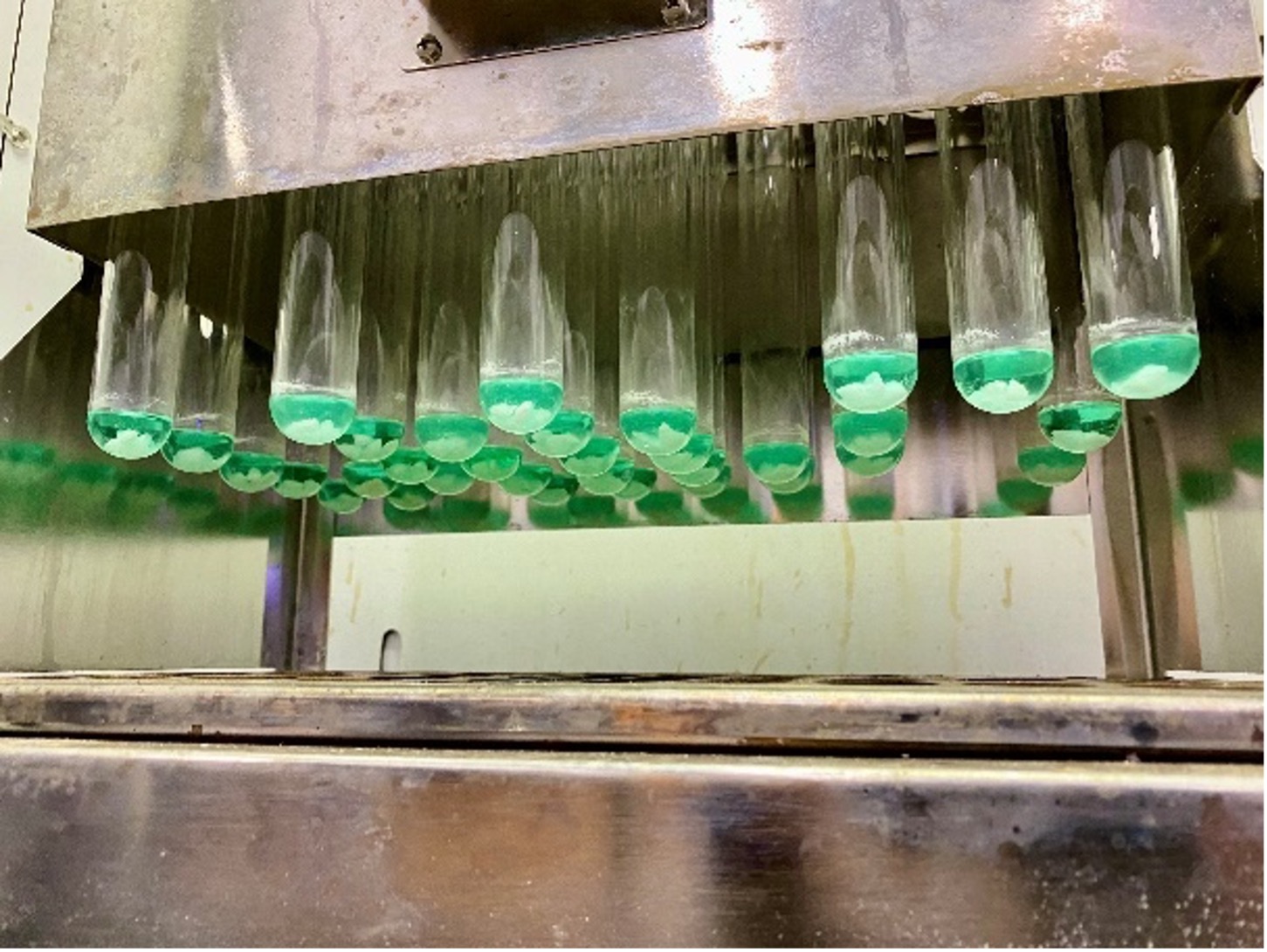
During this process, boiling stones are added to prevent samples from bubbling over during digestion. They are later filtered out.
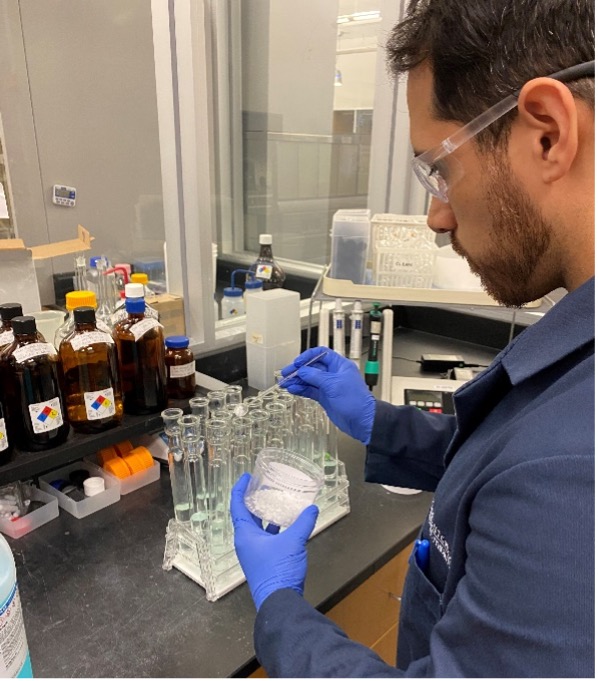
- Next, an instrument called a discrete analyzer combines chemicals and indicators that react together. This reaction converts nitrogen to ammonia and forms a color change based on the amount of ammonia present. The discrete analyzer detects this color change and calculates the total concentration.
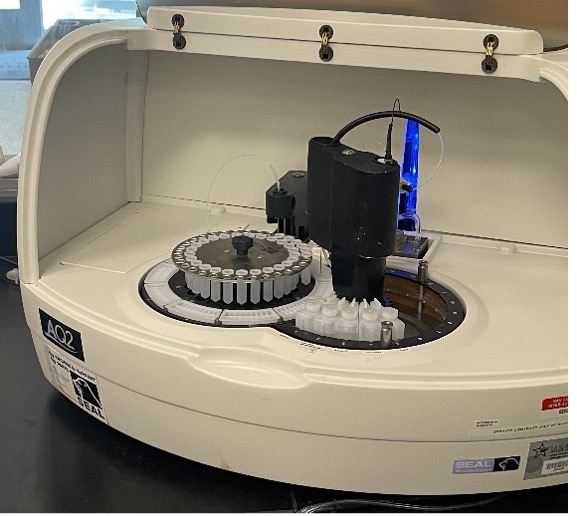 With these tests, water quality scientists produce valuable data that can help identify trouble spots and implement measures, such as Green Infrastructure (GI) projects, to lessen the impact of stormwater. Keep an eye out for future blogs detailing other sorts of testing that take place here at the River Authority’s environmental laboratory.
With these tests, water quality scientists produce valuable data that can help identify trouble spots and implement measures, such as Green Infrastructure (GI) projects, to lessen the impact of stormwater. Keep an eye out for future blogs detailing other sorts of testing that take place here at the River Authority’s environmental laboratory.
How can I help?
Polluted stormwater runoff affects everything from water quality to aesthetics, recreational opportunities, and even the health and safety of residents throughout the watershed. There are lots of ways you can also get involved in limiting the number of contaminants that get swept up in stormwater runoff. By properly disposing of litter, picking up pet waste, limiting outdoor use of cleaning agents and fertilizers, and refraining from applying lawn chemicals before a rain storm, you can help make an impact by keeping our creeks and rivers as healthy as possible.
P.S. Did you know you can keep up with water quality data collected by River Authority lab staff? The Water Quality Viewer and a Bacteria Dashboard provide the public with timely information on the quality of their local creeks and rivers.
River Authority Staff pictured (in order): Senior Water Quality Scientist Michiko Daniels, and Water Quality Scientists Mason Rasti and Joshua Sierra

